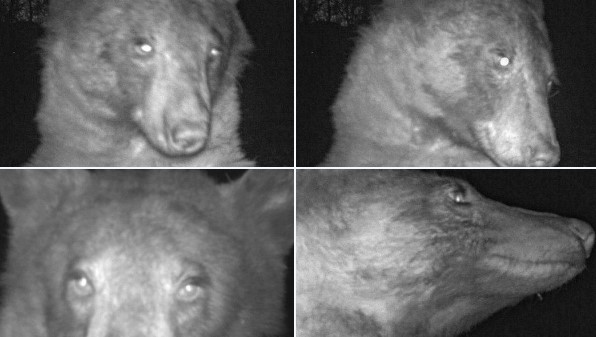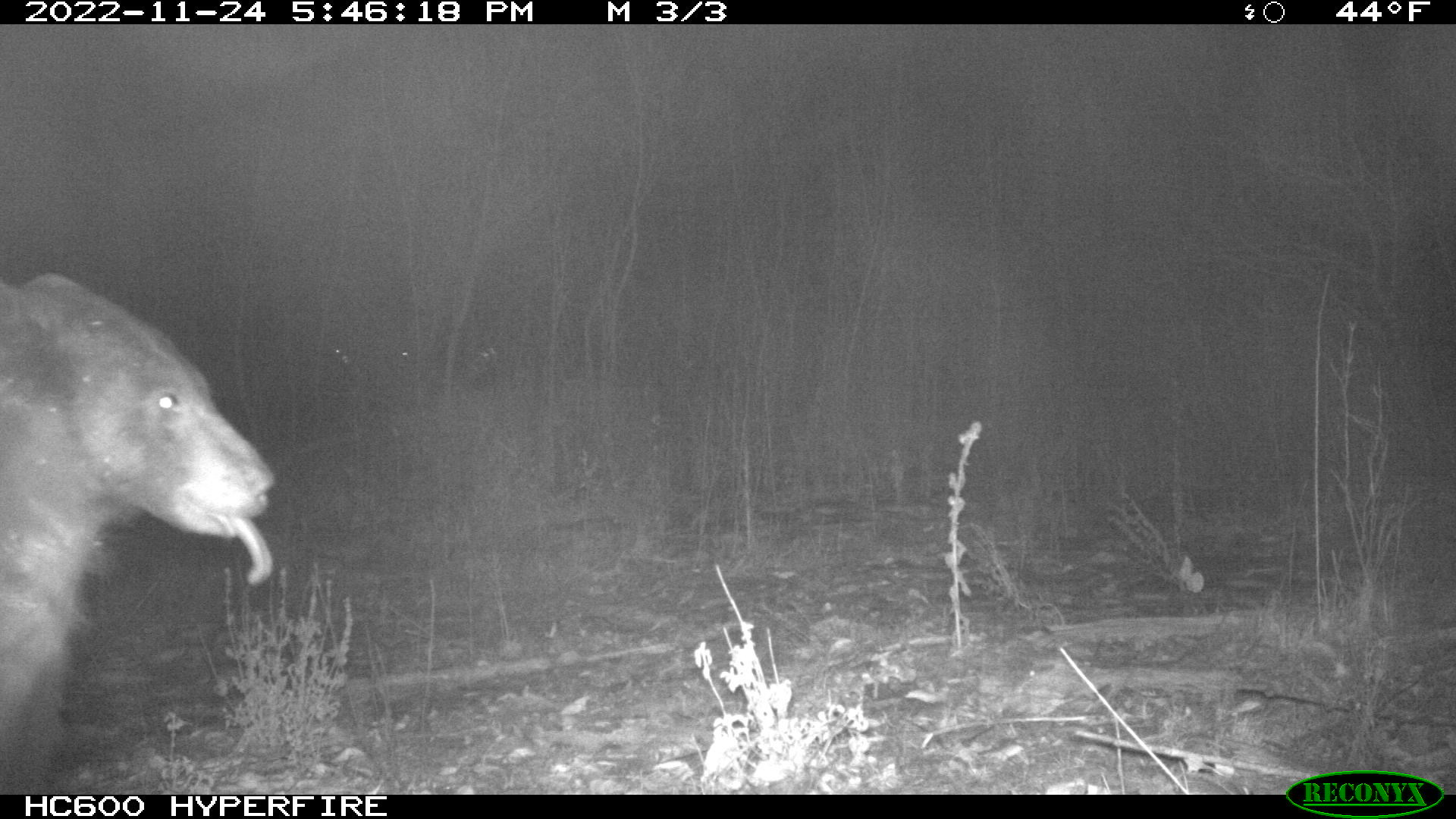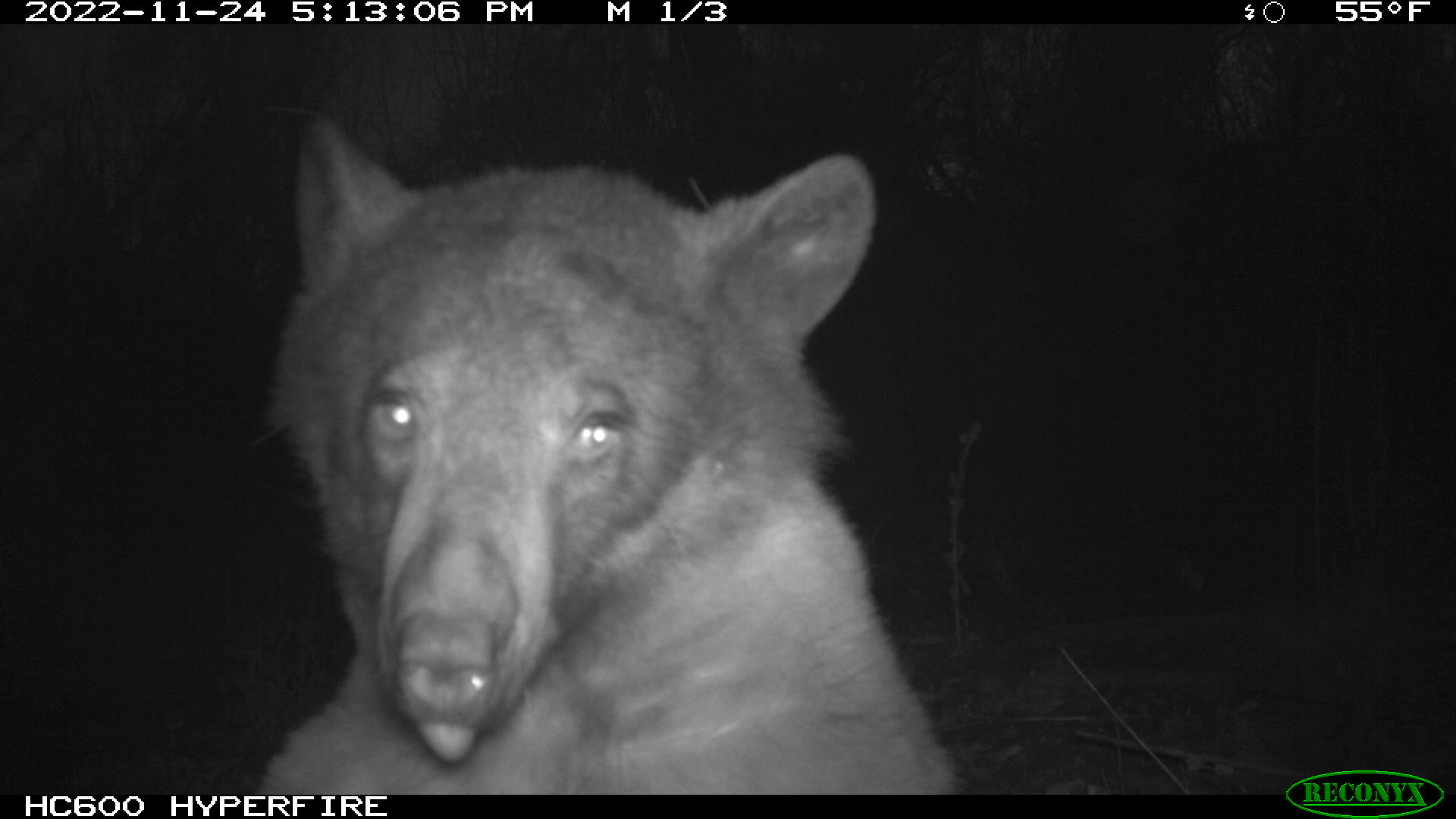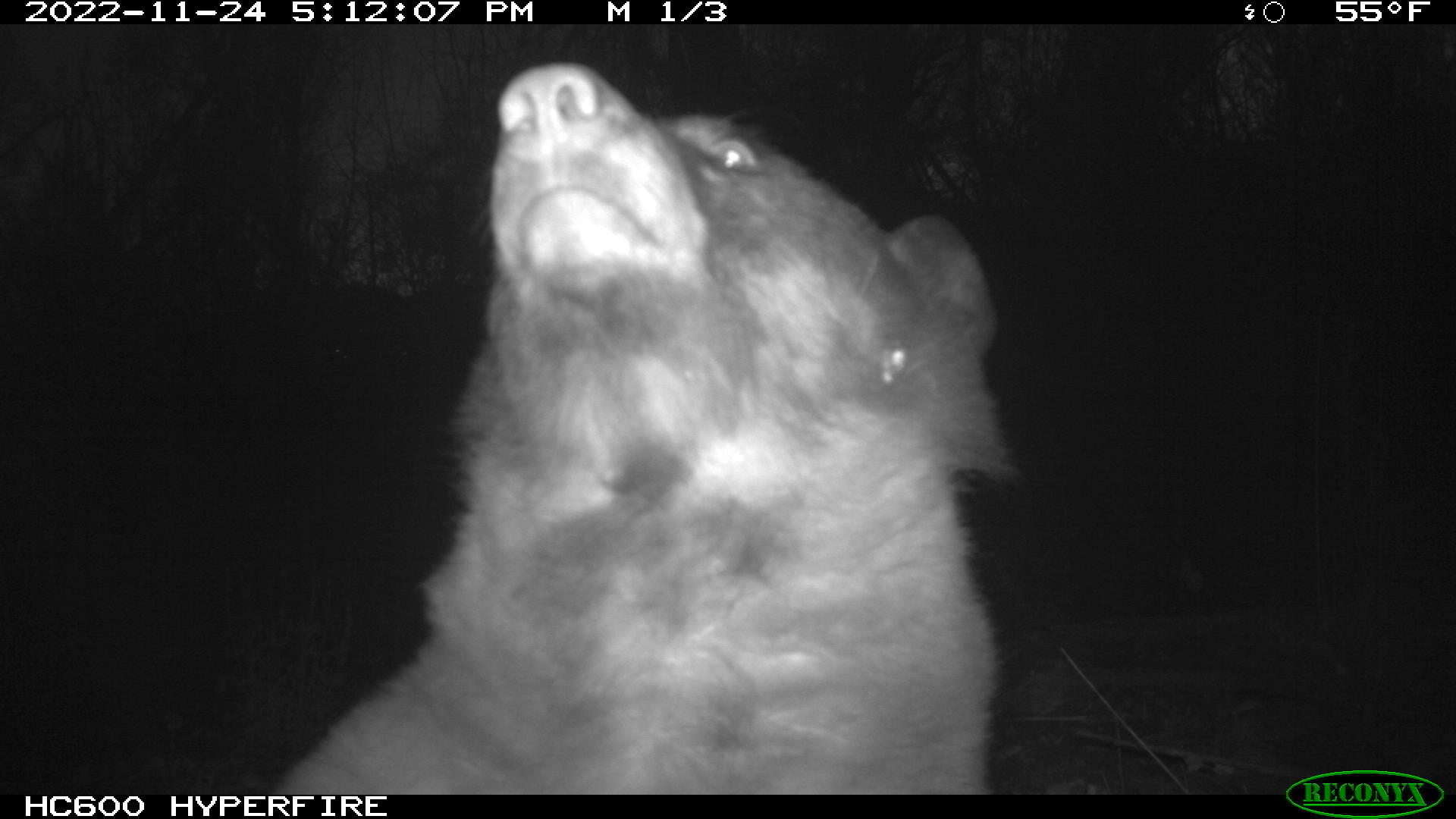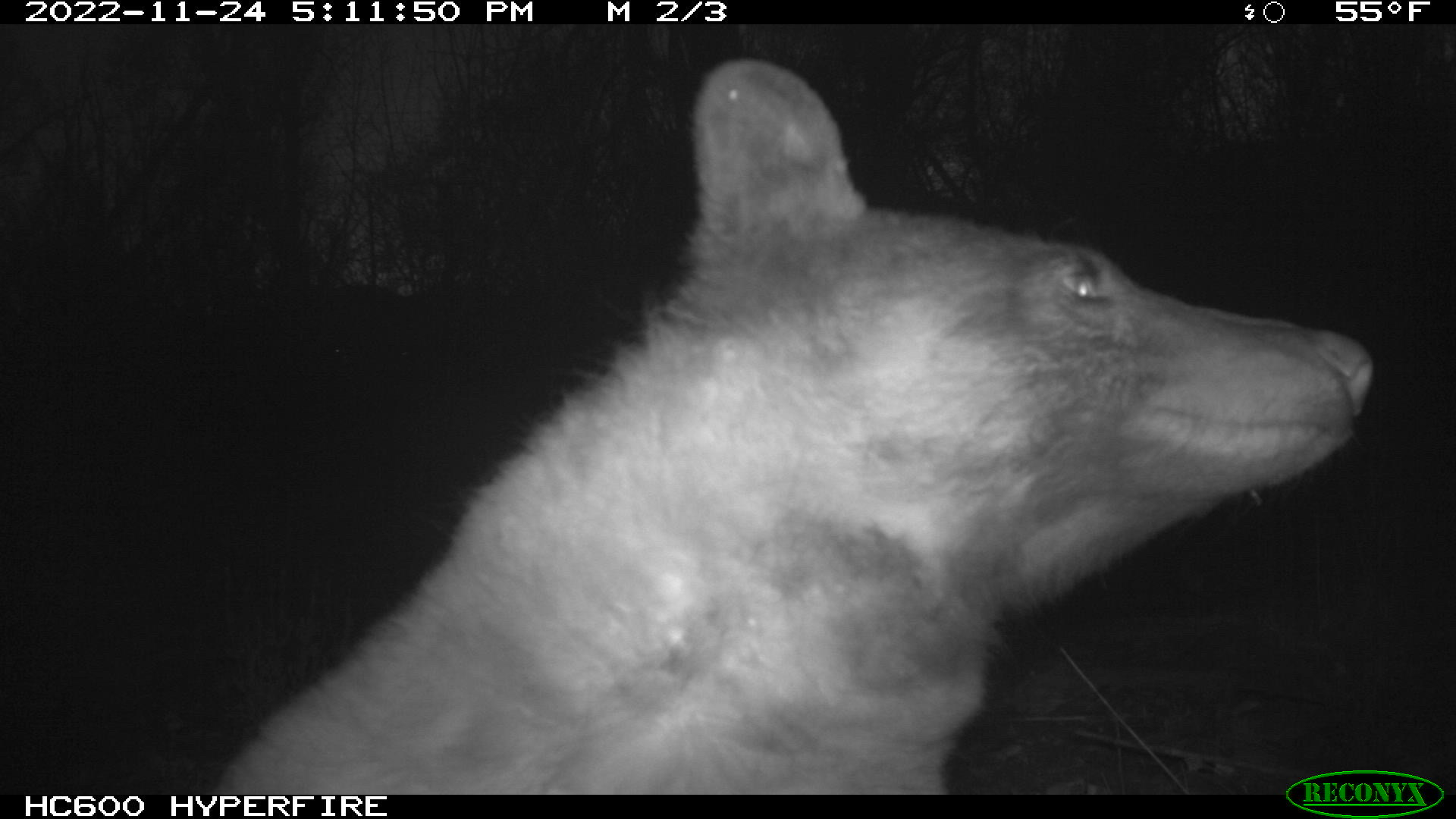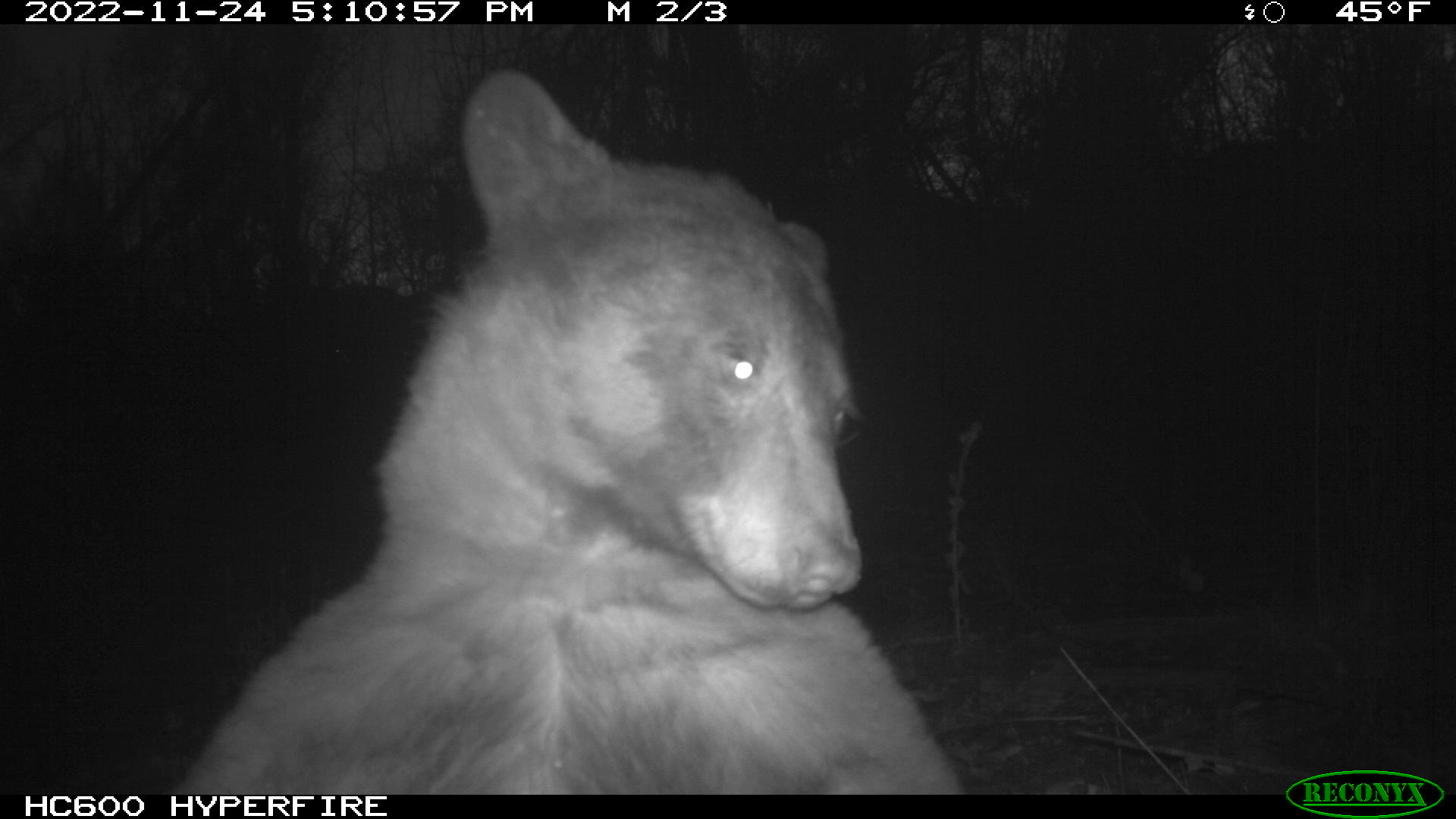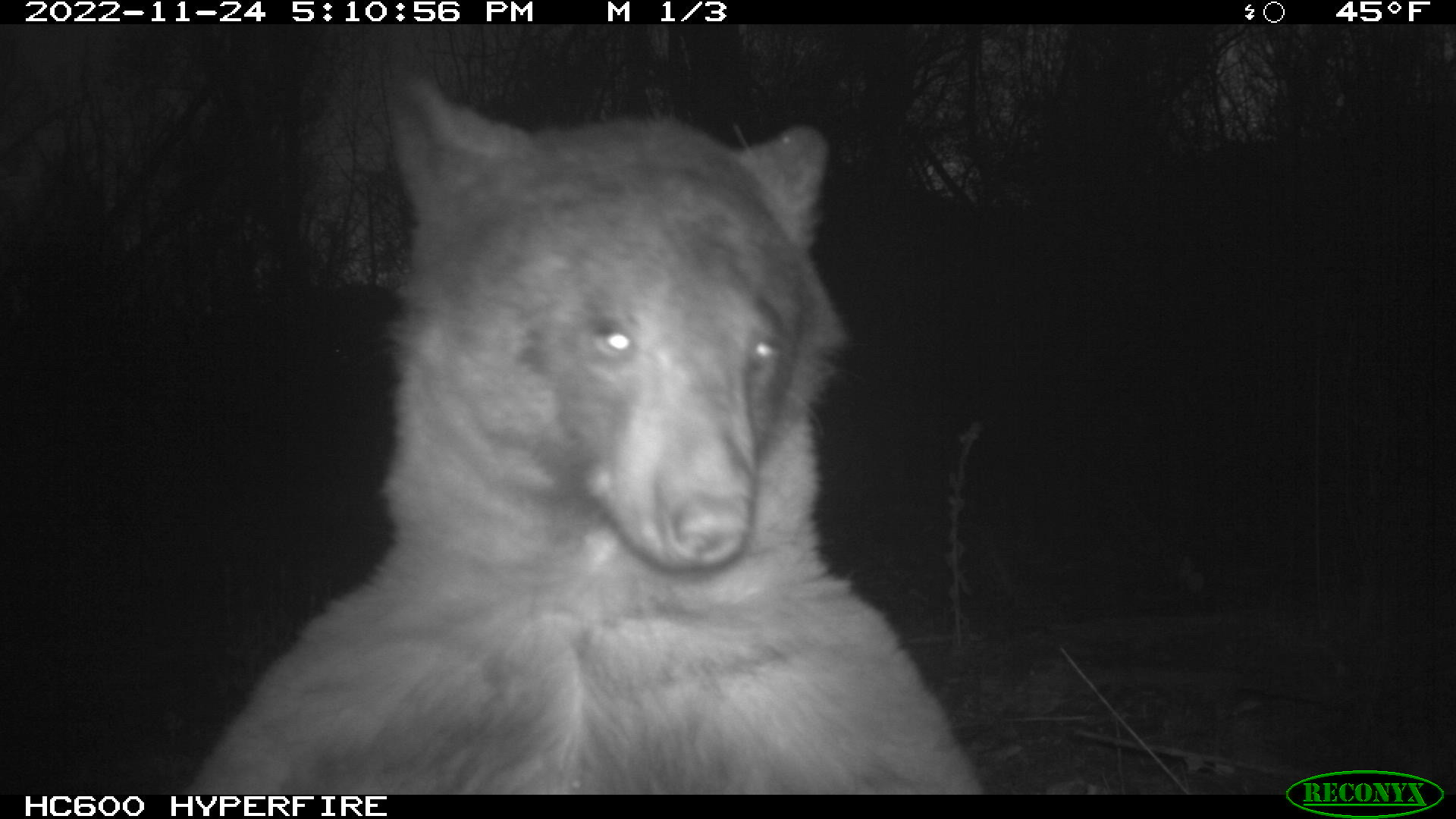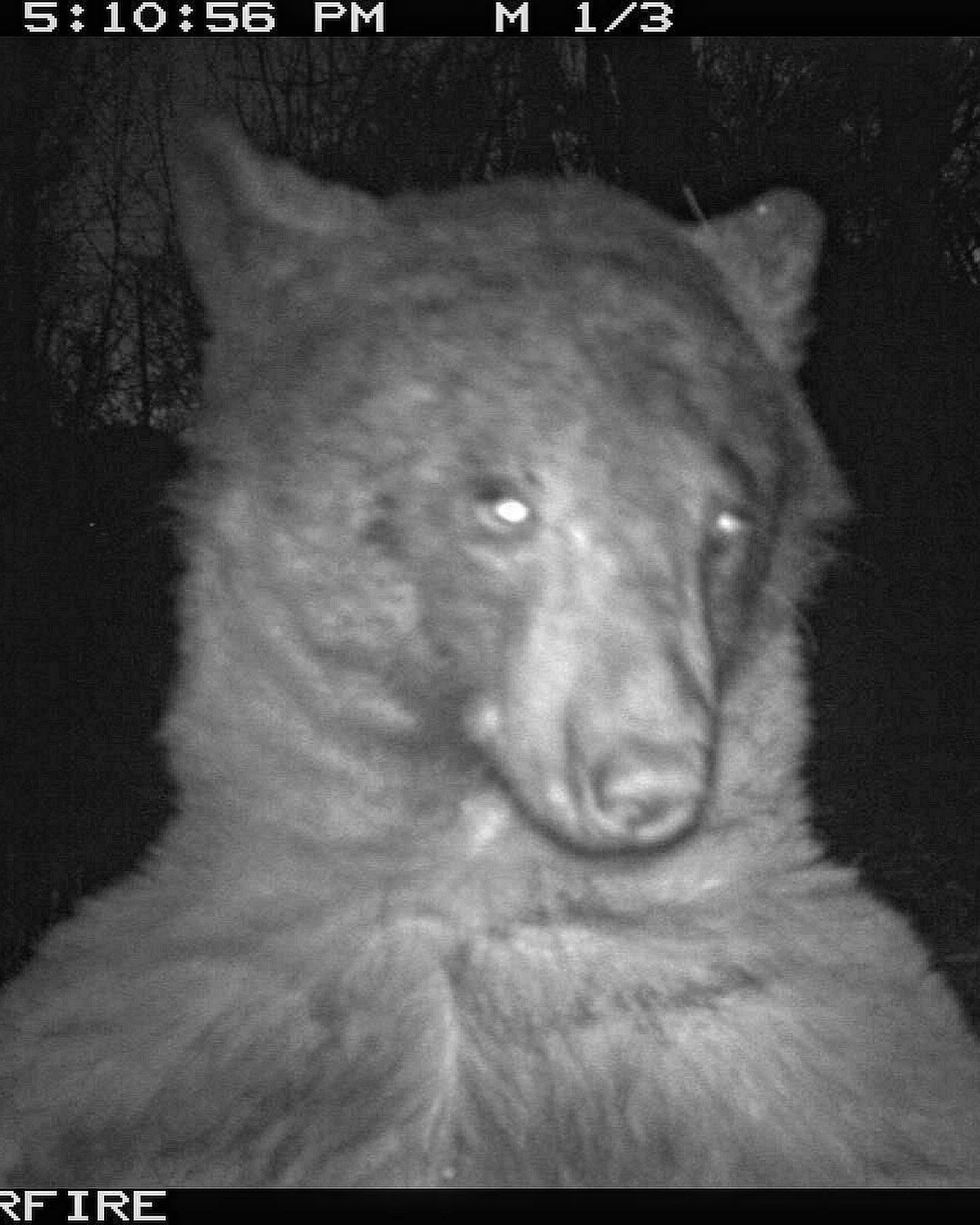A curious black bear in Boulder, Colo., recently used a wildlife camera to capture hundreds of selfies, according to park officials.
The selfies shared by the City of Boulder show the black bear investigating the motion-activated camera.
The City of Boulder Open Space and Mountain Parks Department currently operates nine wildlife cameras across 46,000 acres of land.
“The motion-detecting cameras provide us a unique opportunity to learn more about how local species use the landscape around us while minimizing our presence in sensitive habitats,” Will Keeley, senior wildlife ecologist for Open Space and Mountain Parks, said in a statement about the camera system in August 2022.
“These cameras play an important role in helping OSMP staff identify important wildlife areas,” Keeley said. “The information we collect from them is used to recommend habitat-protective measures to help protect sensitive natural areas.”
The motion-activated cameras snap a photo when an animal steps into view, and they can also record 10–30 seconds of video. Infrared light allows nighttime photography without disrupting nocturnal wildlife.
The cameras are placed in locations known to be traveled by wildlife, such as road underpasses, or where tracks and other signs have been observed.
“Sometimes we put cameras in locations where we think well encounter enigmatic fauna like American beavers or black bears,” said Christian Nunes, a wildlife ecologist with OSMP. “We are fortunate to live in an area with a rich diversity of wildlife species, and these cameras help us to learn what animals are really out there, and what they are up to over the course of a day, a week, or even years.”
